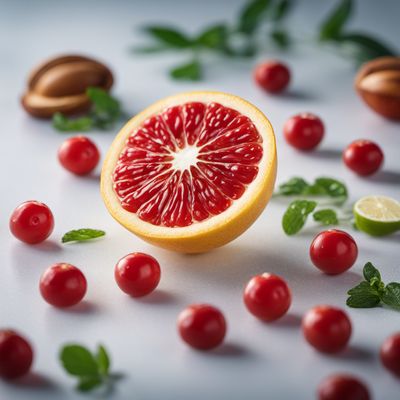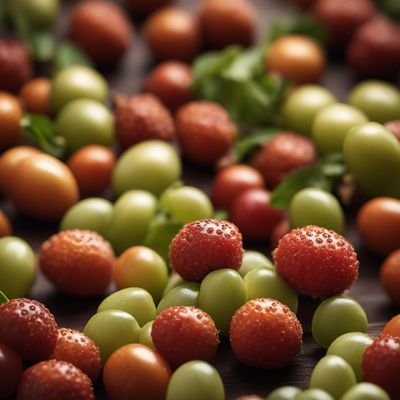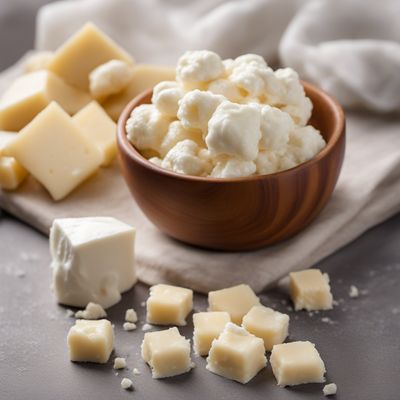
Ingredient
Clotted cream
The Creamy Indulgence
Clotted cream is a thick, yellowish cream with a smooth and silky texture. It has a rich, buttery flavor with a hint of sweetness. Its appearance is characterized by a thick layer of cream that forms on the surface when heated slowly.
Origins and history
Clotted cream has a long history in British cuisine and is particularly associated with the counties of Devon and Cornwall in England. It is traditionally made by heating unpasteurized cow's milk and allowing it to cool slowly, causing the cream to rise and form clots on the surface.
Nutritional information
Clotted cream is high in calories and fat, providing a rich source of energy. It is also a good source of vitamins A and D.
Allergens
Clotted cream may contain lactose and is not suitable for individuals with lactose intolerance or dairy allergies.
How to select
When selecting clotted cream, look for brands that use high-quality, fresh milk and follow traditional production methods. The cream should have a thick consistency and a rich, creamy color. Avoid products with added stabilizers or artificial flavors.
Storage recommendations
To maintain the freshness and quality of clotted cream, store it in the refrigerator. Keep it tightly sealed to prevent any absorption of odors from other foods. Consume it within a few days of opening for the best flavor and texture.
How to produce
Clotted cream is typically produced by heating unpasteurized cow's milk and allowing it to cool slowly. This process causes the cream to rise and form clots on the surface, which are then skimmed off and collected.
Preparation tips
Clotted cream is traditionally served with scones and jam as part of a classic British cream tea. It can also be used as a topping for desserts, pies, cakes, and fresh fruits. Additionally, it adds richness to sauces, soups, and creamy pasta dishes.
Culinary uses
Clotted cream is commonly used in British cuisine, particularly in the counties of Devon and Cornwall. It is also enjoyed in other parts of the world, including Australia, New Zealand, and some regions of the United States.
Availability
United Kingdom, Australia, New Zealand, United States
More ingredients from this category » Browse all

Skyr
The Icelandic Superfood

Mascarpone
The Creamy Indulgence: Mascarpone

Ricotta
Velvety Italian Curds

Quark
Creamy Delight: Unveiling the Versatility of Quark

Cheese, triple creme
Decadent Delights: Exploring Triple Creme Cheese

Cottage cheese
Creamy Curds: Exploring the Delights of Cottage Cheese

Mozzarella
The Melting Delight

Cheese, boilie
Savory Delight: Boilie Cheese

Cheese, juustoleipa
Finnish Delight: Juustoleipa - The Grilled Cheese of Scandinavia

Cheese curd
Squeaky Cheese Delight

Cheese, burrata
Creamy Delight: The Melt-in-Your-Mouth Cheese

Cheese, crescenza
Creamy Delight: Unveiling the Allure of Crescenza Cheese
Recipes using Clotted cream » Browse all

Sachertorte
SacherTorta: An Italian Twist on a Classic Austrian Dessert

Coppetta di Gelato al Cioccolato (Chocolate Gelato Cup)
Decadent Delight: Indulge in a Chocolate Gelato Cup

Creamy Almond Rice Pudding with Cherry Sauce
Velvety Danish Delight: Creamy Almond Rice Pudding with Tangy Cherry Sauce

Cornish Macaroni Bake
Creamy Cornish Macaroni Delight

Creamy Cheesecake Delight
Velvety Smooth Cheesecake with a Northeastern Twist

Classic British Cream Tea
Indulgent Delights: A British Cream Tea Experience

Northeastern American Sanguinaccio
Decadent Chocolate Blood Pudding

Classic British Berry Trifle
Berrylicious Delight: A Twist on the Classic British Trifle

Viennese Black Forest Pudding
Decadent Viennese Chocolate Delight

Maple Cream Pie
Velvety Maple Delight

Classic Key Lime Pie
Tangy Delight: Classic Key Lime Pie Recipe

Ábrystir - Icelandic Sweet Pancakes
Fluffy Delights: Icelandic Sweet Pancakes